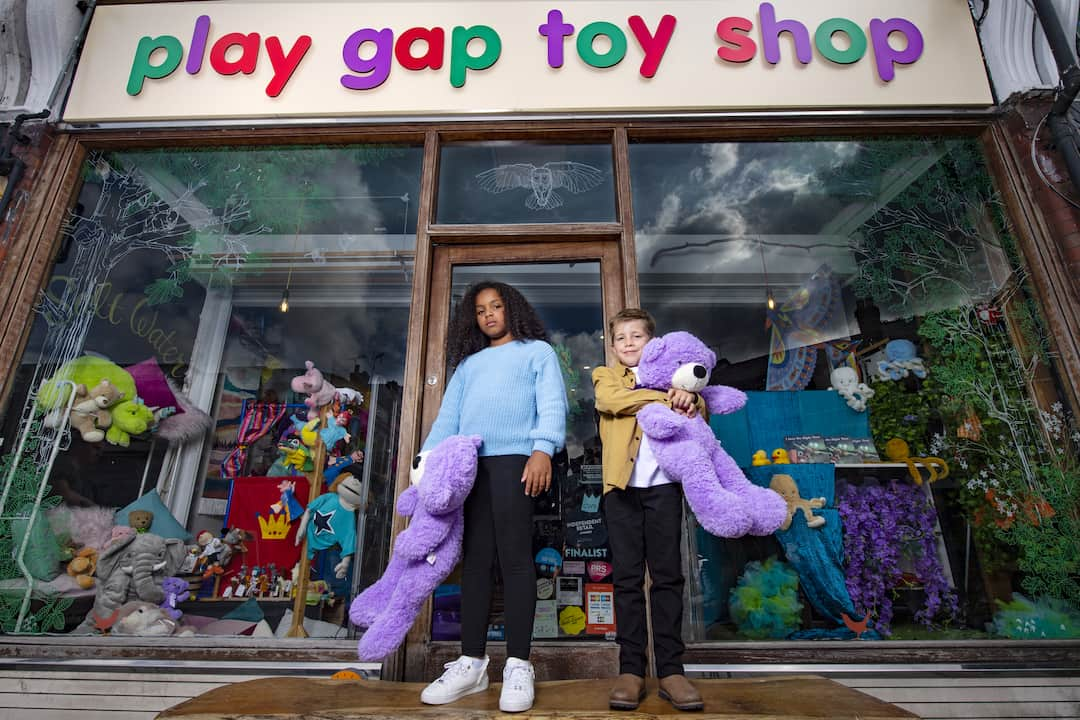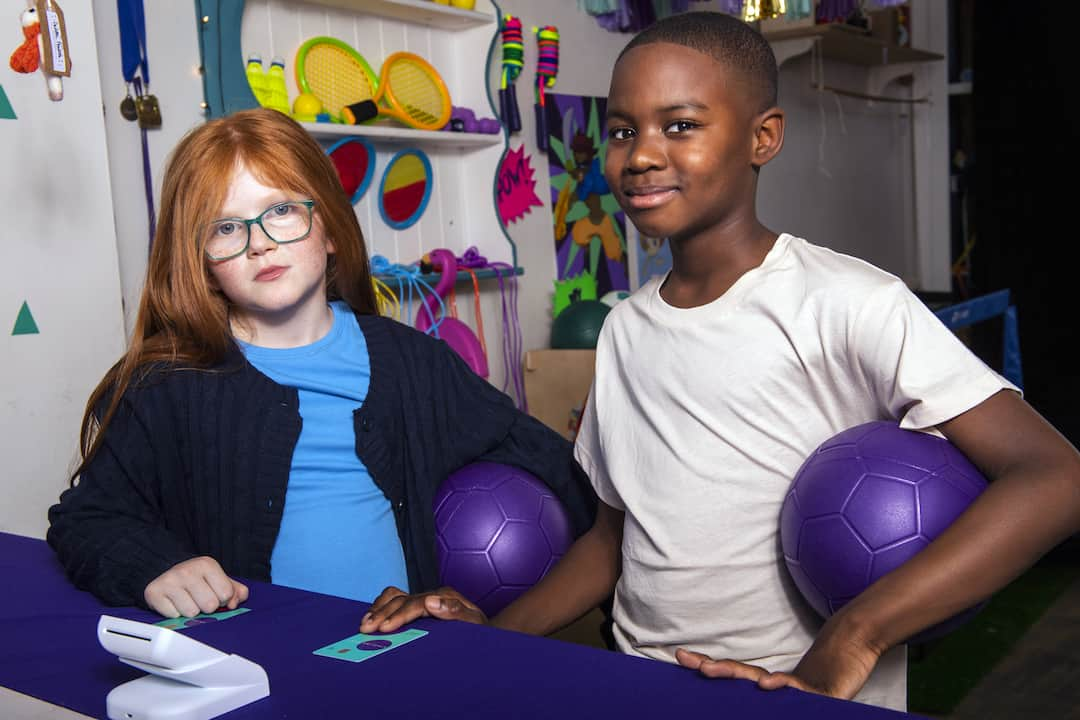Make Pocket Money Equal
Pocket money tips: four parents at Starling reveal how they rule the roost
Authored by the team at Starling Bank
Pocket money tips: four parents at Starling reveal how they rule the roost
Authored by the team at Starling Bank
18 October 2022

“My wife and I have eight children, from 21 years old to a one month-old” says Tom, a fraud investigator at Starling Bank. Organising pocket money is a complex operation for their household, with children up to the age of 18 receiving weekly pocket money payments that are tailored to their age bracket.
Tom’s children are given autonomy over their pocket money – something he believes is important for their money management skills – meaning that he sees his children take lots of different approaches to it.
“I have a son who’s a real saver – he’s probably got more saved up than me!” Tom says. He talks of the pride he feels seeing his son take such a responsible approach to saving. But this can limit his understanding of what things cost in the real world in comparison to his sons and daughters who spend more frequently.
Rachel, Starling’s Brand & Marketing Director, also reports how differently her three sons manage their money, despite receiving an equal financial education at home. Her twin boys, aged 10, are particularly divided: “If their grandparents put £10 on their Starling Kite card, one of them will spend it within two hours while the other will calculate how much closer he is to saving for a Nintendo Switch.”
While both Rachel and Tom’s children have varied attitudes towards money, what’s always consistent is how much both families talk about it.
“Taking our kids grocery shopping is brilliant for showing them the value of things” Rachel says. “They’re becoming really savvy at spotting the best discounts, and as the cost of living crisis bites, we’re showing them how switching to own-brand groceries helps us stick to our weekly budget.”
“Taking our kids grocery shopping is brilliant for showing them the value of things”
Tom likes to use everyday items around the house as a chance to discuss value. “We’ll explain to our younger children how many hours we have to work to earn things, whether that’s a toy or the tumble dryer” he says. “Further up the age bracket, my daughter is about to graduate from university, so we’re having lots of conversations about whether it makes more financial sense for her to move back home and save some money or to spend her wages on rent.”
Gurmokh, Starling’s database administrator, and his wife involve their son (11) and daughter (6) in the family finances as much as possible. “We want them to know the value of money so we make a conscious effort to talk about our budget and mortgage payments in front of them.”
Gurmokh’s children are given an early experience of working in the modern world. “We want to impress upon them that things don’t come for free” he says, which is why his two children receive an hourly rate for the chores they do, and they can complete more chores and earn more money if they want to.
How much pocket money should you give? When we ask Gurmokh how the going rate for chores is agreed, he reveals that the national minimum wage is used to benchmark hourly rates for his two kids to account for things like inflation. “It’s almost like a contract is made between us and our children, which I hope will give them more experience of negotiating contracts in the future.”
“the national minimum wage is used to benchmark hourly rates for his two kids to account for things like inflation”

Starling’s internal communications manager, Zuzanna, makes similar agreements with her six year old son who, rather than being incentivised with money, is incentivised with purchases instead.
“He’ll often point at things like magazines or stationary sets in the supermarket and ask if he can have them. I want him to learn that gratification is not instant; he has to earn the things he wants, so we agree that if he works hard at school or is well behaved for a month, he can have his reward then.”
Zuzanna has no influence in what her son buys, who in turn is not influenced by gendered marketing and merchandising. “He loves dinosaurs like lots of boys do, but he equally loves My Little Pony and other animal toys. I want him to be free to make his own decisions.”
Many other parents we spoke to want their children to break free from gender stereotypes if they so wish. “When the toothbrushes are replenished in our house” Tom says, “there’s an equal fight for the pink one between my sons and my daughters. We’ve had to make a rota.”
Tom also notes how this openness is evident in his children’s career aspirations: “My daughter asked for a play tool set for Christmas. She helped me build the pond (little did she know her tools weren’t real) and now she wants to be a builder when she grows up. On the other hand, I have a son who wants to be a midwife. This aspiration was rare for boys when I was young.”
Rachel discusses how her sons are sport obsessed, but that her twin son is one of just two boys to join the mixed netball team. “He doesn’t see netball as a ‘girls game,’ and now more boys are gradually joining the squad. He plays in a mixed football team too, which makes me feel excited about the next generation of the women’s game.”
It’s important to Rachel that gender stereotypes aren’t enforced at home. “My husband and I set an example to our kids by equally splitting responsibilities at home regardless of what they are. We make a point of sending pocket money from our Starling Joint Account too, so that neither of us is perceived as the head of household finance – even if I’m the one that works at a bank!”
“We make a point of sending pocket money from our Starling Joint Account too”

Gurmokh talks of how important it is that his wife sets an example to their daughter by working: “we want her to see that women don’t have to follow the traditional path into home making.”
When it comes to how parents pay their children – card or cash? Working for a digital bank, our interviewees might be biassed, but the results were still unanimous.
Zuzanna’s son loves his Kite card: “It’s brilliant as he can see the notifications coming through to my phone, and I can show him how his purchases affect his savings – much easier than with cash. He also feels more grown up with a card and is always excited to use it.”
“Starling’s Kite card is perfect for my kids,” Rachel says. “They appreciate the value of money so much more when pocket money is paid digitally than via cash.” It’s a strategy that Gurmokh also takes.
For Tom, cash is reserved for the tooth fairy and the tooth fairy only. What’s the going rate for a tooth these days, we ask: “No more than £1 – with eight kids, I’d be bankrupt otherwise!”